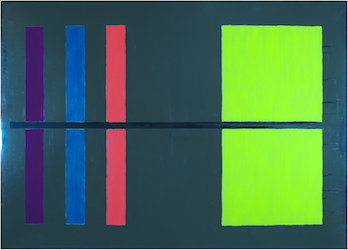|
INVENTING ABSTRACTION
By PHILIP ANDERSSEN Published: Tuesday, 15 January 2013 |
|
 Excerpt from Leah Dickerman's "Inventing Abstraction 1910 - 1925: How a radical idea changed Modern Art"
Excerpt from Leah Dickerman's "Inventing Abstraction 1910 - 1925: How a radical idea changed Modern Art"
"Roughly one hundred years ago, a series of precipitous shifts took place in the cultural sphere that in the end amounted to as great a rewriting of the rules of artistic production as had been seen since the Renaissance. That transformation would fundamentally shape artistic practice in the century that followed. Beginning in late 1911 and across the course of 1912, in several European and American cities, a handful of artists - Vasily Kandinsky, František Kupka, Francis Picabia, Robert Delaunay, Arthur Dove - presented paintings that differed from almost all of those that had preceded them in the long history of the medium in the Western tradition: shunning the depiction of objects in the world, they displayed works with no discernible subject matter. Indeed they abandoned the premise of making a picture of something. "Young painters of the extreme schools," the poet and critic Guillaume Apollinaire wrote in February 1912, "want to make pure painting, an entirely new art form. It is only at its beginning, and not yet as abstract as it wants to be." . . .
. . . In celebrating this bold aesthetic adventure on its centennial, Inventing Abstraction focuses on its first fifteen years, as its ideas developed and spread through a wide international network of modern artists. Passing not only through cities thousands of miles apart, it also reached into many mediums - into painting, drawing, sculpture, photography, and film, into writing and the book, into music and dance. Inventing Abstraction explores abstraction as both a historical idea and an emergent artistic practice. The story of its sudden flourishing may have something to tell us about the nature of innovation itself: abstraction was not the inspiration of a solitary genius but the product of network thinking - of ideas moving through a nexus of artists and intellectuals working in different media and in far-flung places. Its pioneers were more closely linked than is generally understood. From the start, abstraction was an international phenomenon, as artists and images moved quickly across borders, sharing in a new exhibition and media culture. Inventing Abstraction accordingly takes a transnational perspective: surveying key episodes in abstraction's early history, it includes work made across Eastern and Western Europe and the United States" . . .
Dickerman, L. (2012) Inventing Abstraction 1910 - 1925: How a radical idea changed Modern Art. New York, NY: The Museum of Modern Art
comments powered by Disqus
